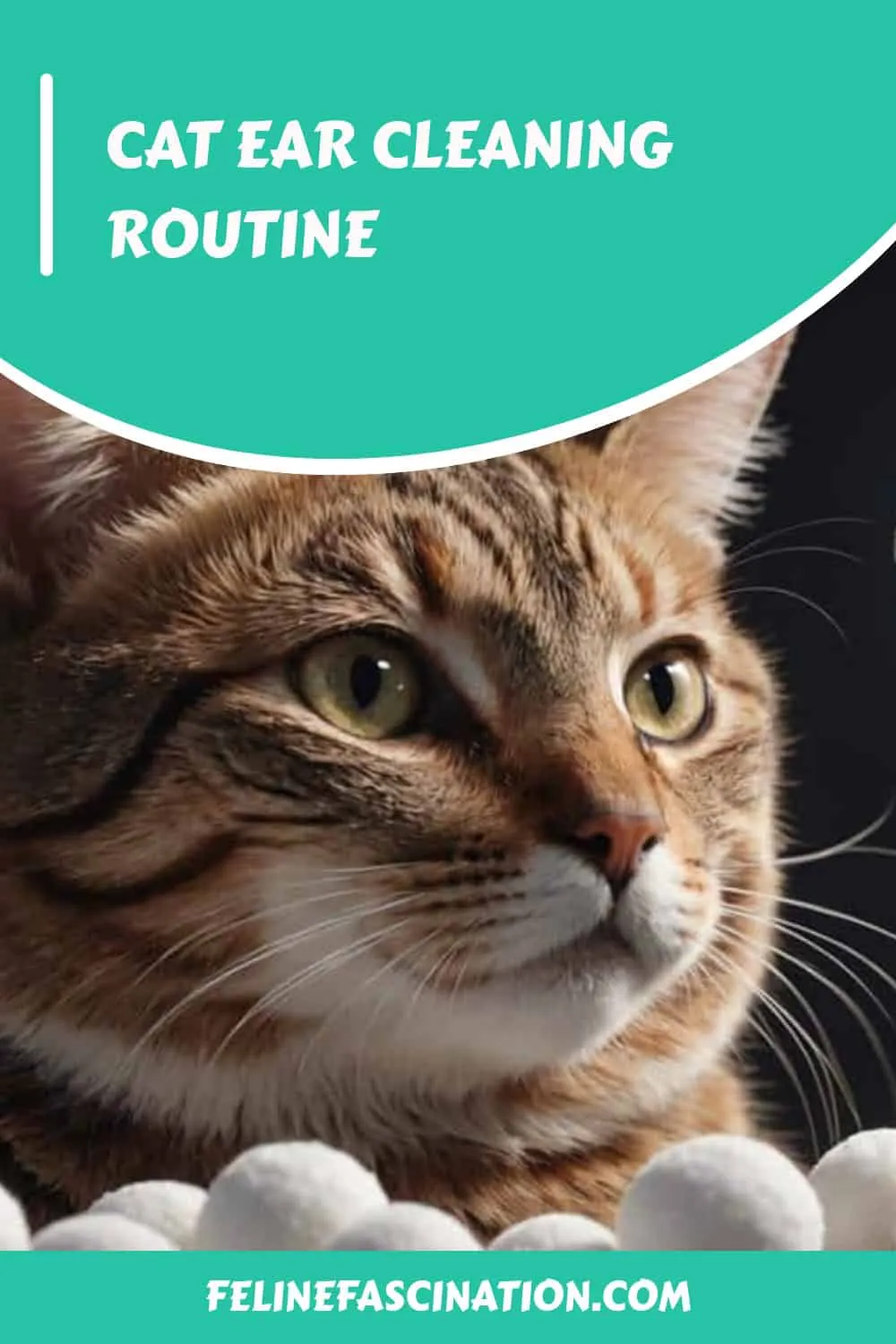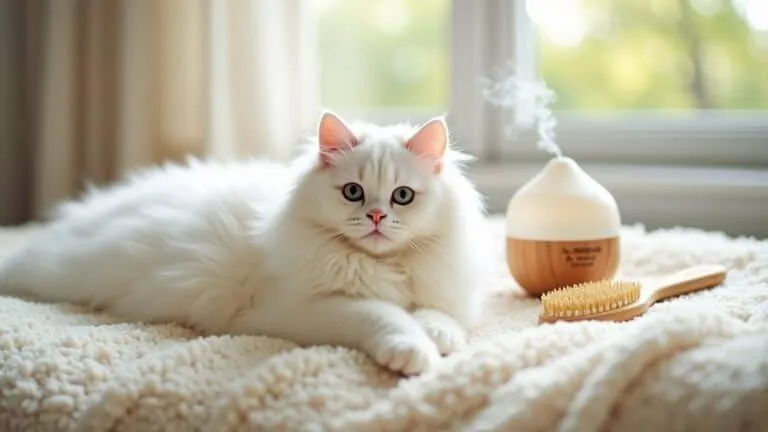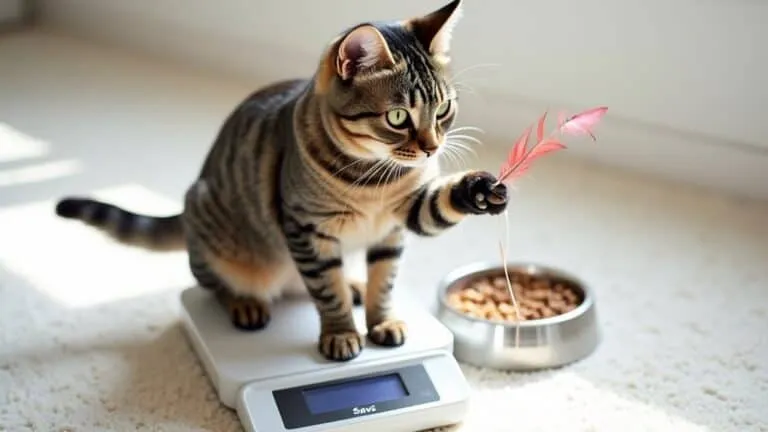The Best Fluffy Pancakes recipe you will fall in love with. Full of tips and tricks to help you make the best pancakes.

Setting aside a few minutes weekly to inspect and clean your cat's ears is crucial. This regular routine can catch dirt, wax buildup, or health issues early, and even help prevent costly and painful ear infections.
Use vet-recommended ear cleaning solutions and incorporate ear cleaning into your regular grooming schedule. This way, you'll be able to catch any problems early, making treatment easier and less costly.
Keep an eye out for signs of ear problems, such as redness, inflammation, or bad odor. If you notice any issues, take prompt action.
As you continue this routine, you'll gain a deeper understanding of how to keep your cat's ears healthy and happy.
Establishing a Cleaning Routine
So, you want to establish a cleaning routine for your cat's ears. Here's the thing: setting aside a few minutes each week to inspect your cat's ears can really help. You'll be able to identify potential issues before they become serious problems.
By doing this regular inspection, you'll catch dirt, wax buildup, or signs of health issues early on. This way, you can prevent them from escalating into more severe problems.
Now, to make the experience stress-free for your cat, use positive reinforcement techniques like treats and a calming environment.
When cleaning is needed, make sure to use a vet-recommended ear cleaning solution. This will guarantee safety and effectiveness. Whatever you do, avoid using harmful substances like alcohol or hydrogen peroxide, which can cause more harm than good.
Incorporate ear cleaning into your regular grooming schedule to promote overall ear health and maintain a consistent approach. By doing so, you'll be able to identify potential issues early, address them promptly, and provide your cat with the best possible care.
With a routine in place, you'll be able to provide your cat with a healthy and happy life.
Signs of Ear Problems in Cats
Monitoring your cat's ear health is crucial, so it's essential to recognize the signs of potential problems.
Redness, inflammation, or a strong, unpleasant smell are all indicators of ear infections.
If you notice any of these warning signs, you can take prompt action to address the issue before it becomes more serious.
The sooner you catch an ear problem, the better for your cat's health and your wallet – treating ear infections early on is much easier and less expensive than letting them develop into more severe conditions.
Ear Infection Indicators
Recognizing the signs of ear problems in your cat is super important, because ear infections can be really painful and potentially lead to serious complications if left untreated.
So, what're the signs you should be looking out for? Well, if your cat is excessively scratching or rubbing their ears, it might suggest they're feeling irritable or uncomfortable. Similarly, if they're frequently shaking or tilting their head, it could be a sign of an underlying issue.
You might also notice a foul odor coming from their ears, which is often associated with infections or ear mites. If you see redness, swelling, or discharge from the ear canal, those are clear signs of an ear infection or other health problems.
If you notice any of these signs, it's time to get your cat to the vet. They can diagnose the underlying issue and provide the right treatment. Keep in mind that ear infections can cause a lot of discomfort and pain for your cat, so don't hesitate to take action if you suspect a problem.
Unusual Ear Odors
Unusual ear odors in your cat can be a sign of underlying problems that need attention from a veterinarian. If you notice a foul smell coming from your cat's ears, it could be a sign of bacterial or fungal infections. These infections can develop from moisture or inflammation in the ear canal.
If you notice unusual odors accompanied by symptoms like head shaking, scratching, or redness around the ears, you should have your cat's ears examined by a vet. They can check for underlying health issues that need to be addressed.
Here's a breakdown of what different symptoms might mean:
| Symptom | Possible Cause | Action |
|---|---|---|
| Unusual Odors | Ear Infections, Wax Buildup | Veterinary Evaluation |
| Head Shaking | Ear Mites, Infections | Cleaning Process, Hygiene |
| Redness | Inflammation, Infections | Veterinary Attention |
| Scratching | Ear Mites, Infections | Cleaning Process, Hygiene |
| Bad Smell | Bacterial, Fungal Infections | Veterinary Evaluation |
Regularly checking your cat's ears can help you catch unusual odors early on. This allows you to get treatment started before the condition gets worse. If you notice a persistent bad smell from your cat's ears despite regular cleaning, it might be a sign of an infection that needs professional attention. Don't hesitate to seek help if you suspect ear problems in your cat.
Choosing the Right Cleaner
When it comes to choosing an ear cleaner for your cat, safety should be your top priority. You want a product that's gentle on your pet's sensitive ears.
Look for cleaners with antibacterial or antifungal properties. These will help tackle any infections that might be brewing.
You'll also want a cleaner that's specifically designed to break down wax and debris. This will make it easier to remove dirt and grime, and promote overall ear health.
Ear Cleaner Ingredients
When it comes to choosing an ear cleaner for your cat, it's super important to get it right. The goal is to remove dirt and debris without disrupting the delicate balance of the ear canal.
You'll want to steer clear of ear cleaners that contain hydrogen peroxide or alcohol. These ingredients can irritate and dry out your cat's sensitive ear tissues.
Instead, look for products that have antibacterial or antifungal properties. These will help tackle potential infections and keep your cat's ears healthy.
Natural ingredients like aloe or witch hazel are also great to have in an ear cleaner. They can soothe the ear canal while cleaning it out.
Safe Cleaning Properties
Formulating an effective ear cleaning routine for your cat starts with choosing a cleaner that has safe cleaning properties. The wrong ingredients can cause more harm than good.
When selecting a cleaning solution, make sure it's specifically formulated for cat ears and doesn't contain harsh ingredients like hydrogen peroxide or alcohol.
Here are some properties to look for in a good ear cleaner:
You want antibacterial properties to help prevent infections while cleaning the ears. Gentle cleansing agents are also a must, as they safely remove debris without harming sensitive ear tissue. It's also important that the product is veterinarian recommended, which confirms the product is suitable for your cat's health needs and ear issues.
And finally, make sure the product is labeled as safe for cats, avoiding human ear cleaning solutions that can cause irritation.
Consult with your veterinarian for recommendations on effective ear cleaning solutions that cater to your cat's specific needs. By choosing a cleaner with safe cleaning properties, you can effectively clean your cat's ears while preventing infections and promoting overall ear health.
The Cleaning Process Step-by-Step
Before you start cleaning your cat's ears, make sure to secure your cat in your lap or wrap it in a towel to prevent sudden movements. This will help create a calm environment, which is essential for a successful ear cleaning process.
Your cat will feel more comfortable, and you'll reduce the risk of injury or stress.
Now, gently pull back the ear flap to expose the ear canal. This will give you access to apply a few drops of a vet-recommended ear cleaning solution into the ear. Be careful not to touch the canal with the bottle to avoid contamination.
Next, massage the base of the ear for 20-30 seconds to help loosen any debris. Then, let your cat shake its head to expel the excess liquid and loosened debris.
After that, use a cotton ball to gently wipe away any visible dirt or wax from the ear canal. Once you're done with one ear, repeat the process on the other ear.
Common Mistakes to Avoid
When you start a regular ear cleaning routine for your cat, it's just as important to know what not to do. You don't want to cause more harm than good! Common mistakes can lead to irritation, injury, or even make existing ear issues worse.
So, what're these mistakes to avoid? For starters, don't use hydrogen peroxide or alcohol-based cleaners. These can irritate your cat's sensitive skin and make existing issues worse.
Another mistake is using cotton swabs (Q-tips). These can push debris further into the ear canal and even risk eardrum perforation! Ouch!
Over-cleaning is also a no-no. This can lead to irritation and cause your cat to show signs of discomfort.
You should also make sure to secure your cat properly while cleaning their ears. If not, it can cause stress and injury during the process.
Lastly, don't neglect to inspect your cat's ears regularly. If you don't, you might miss signs of infection or ear mites, which can delay veterinary attention.
Remember, your cat's ears need gentle care, and over-cleaning can be detrimental. If you're unsure about ear medication or notice signs of discomfort, it's always best to consult your veterinarian for personalized pet care guidance.
When to Seek Veterinary Help
When you notice something's off with your cat's ears, don't hesitate to get them to the vet ASAP. You should clean their ears regularly, but be gentle – don't push them too far or make them uncomfortable.
If you see your cat scratching their ears nonstop, shaking their head, or showing signs of pain when you touch their ears, it's time for a vet visit.
Some signs that mean you should get your cat to the vet pronto include a weird smell or discharge coming from their ears – that could be an infection or ear mites.
If their ear canal is red, swollen, or inflamed, that needs attention too, since it can get worse if left alone.
Changes in the ear wax, like if it's different in consistency or amount, can also be a sign of an underlying health issue.
And if your cat shows obvious signs of pain or discomfort when you touch their ears, that's an emergency.
Frequently Asked Questions
How Often Should a Cat's Ears Be Cleaned?
So, how often should you clean your cat's ears? Well, the general rule of thumb is to clean them every few months. However, if your cat is prone to infections or wax buildup, you'll need to clean them more frequently – think every 1-2 weeks. It's also important to keep an eye out for signs of infection and consult with your vet when needed.
What Can I Use to Clean My Cat's Ears at Home?
When it comes to cleaning your cat's ears at home, it's essential to use safe products and gentle techniques.
You'll want to stick with vet-recommended ear cleaning solutions, as these are specifically designed for your cat's sensitive ears. Avoid using home remedies, as these can do more harm than good and even lead to ear infections.
What Is the Black Stuff in My Cats Ears?
So you've noticed some black stuff in your cat's ears. That can be pretty concerning, right? It might just be ear wax, dirt, or debris, but it could also be a sign of something more serious like ear mites, infections, or allergies.
Either way, it's a good reminder to keep an eye on your cat's ears and make sure they're getting the regular grooming they need. You can do some of this yourself with the right supplies, but it's also important to take your cat to the vet regularly to make sure they're staying healthy.
Will a Groomer Clean a Cat's Ears?
So, you're wondering if a groomer will clean your cat's ears?
Well, the good news is that a professional groomer will usually include ear cleaning as part of their services. They'll use gentle techniques and specialized products to get the job done. However, if your cat's ears are in really bad shape, the groomer might refer you to a vet instead. Their main priority is to make sure your cat's ears are healthy and infection-free.
Final Thoughts
You've got a solid cat ear cleaning routine going on, which means your kitty is going to stay healthy and happy.
Now, it's essential to keep a close eye on your cat's ears regularly. You're looking for signs of potential problems like discharge, bad smells, or redness.
If you're ever unsure about any part of the cleaning process or notice something weird, don't hesitate to reach out to your vet. They're the experts, and they can give you personalized advice.
By following these guidelines, you'll be able to prevent ear infections and keep your cat's overall health in top shape.










